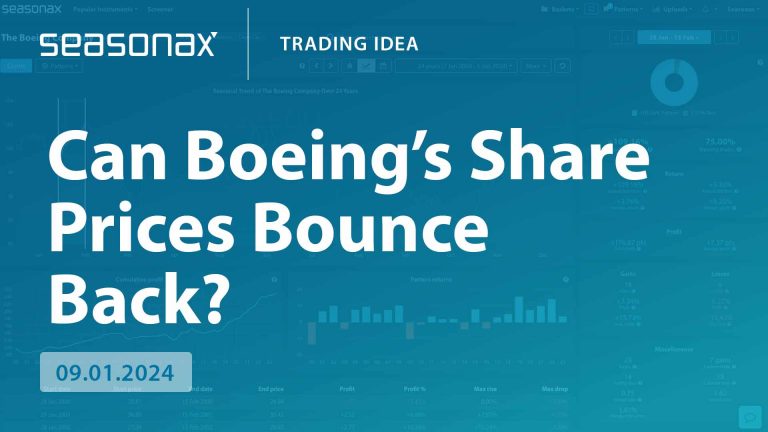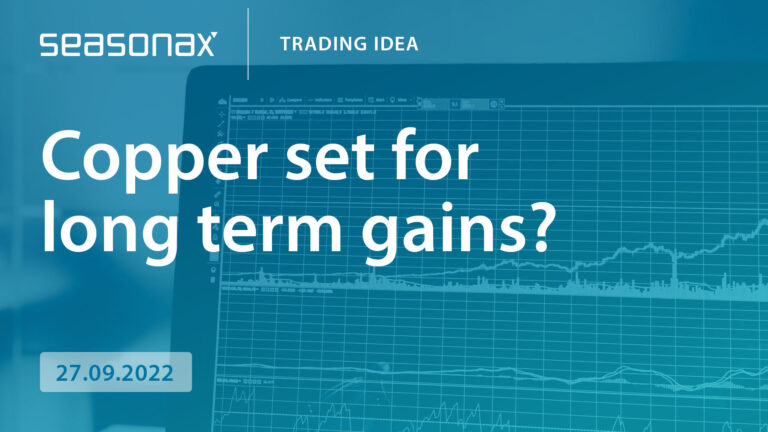In order to beat the market, you are probably – like many investors – spending a lot of time searching for rare undiscovered gems or sophisticated trading rules.
There is actually a simpler way.
I want to show you how you could have beaten the market over the past 48 years with only two trades per month, while being invested only one third of the time and without employing any kind of leverage.
Most Gains are Generated Around the Turn of the Month!
Take a look at the following chart. It shows the capital gains delivered by the S&P 500 Index since 1970, depending on the days of the month in which a position was held.
The blue curve shows the cumulative return generated by the index between the 26th of every month and the 5th of the subsequent month. The red curve shows the return generated by the index during the rest of the time, i.e., between the 6th and the 25th of every month.
Cumulative return of the S&P 500 Index around the turn of the month (blue line) and the rest of the time (red), indexed (100), 1970 to 2018

The biggest gains are generated around the turn of the month. Source: Seasonax
As you can see, the time period around the turn of the month outperformed the rest of the time markedly. The average gain achieved during the profitable time period was 4.88 percent, while in the remaining time a much smaller average gain of just 2.23 percent was recorded. A significant difference!
This phenomenon is known as the “Turn of the Month Effect”. It is related to recurring monthly cash flows, such as e.g. salary payments.
The turn of the month period beats the UK stock market over the entire time span under review
The “Turn of the Month Effect” exists not only in the US – it is can actually be observed globally. I therefore will put the British stock market under the magnifying glass next.
Below is once again a chart depicting the cumulative return generated over the turn of the month period in blue, and the return generated in the rest of the time in red – this time for the FTSE 100 Index from 1984 to 2018.
Great Britain: Cumulative return of the FTSE 100 Index around the turn of the month (blue line) and over the rest of the time (red line), indexed (100), 1984 – 2018

The turn of the month period leads consistently. Source: Seasonax
As the illustration shows, in this case investing in the turn of the month period actually outperformed over the entire period under review. The average gain amounted to 7.76 percent, while an average loss of 1.06 percent was actually recorded over the remaining time period!
The turn of the month period clearly wins out in Germany as well!
And what is the situation in Germany? The chart below once again shows the return generated by investing in the turn of the month period in blue vs. the return achieved in the remaining time period in red – this time for the German DAX Index from 1970 to 2018.
Germany: Cumulative return of the DAX Index around the turn of the month (blue line) and over the rest of the time (red line), indexed (100), 1970 – 2018

The returns of the mid-month period are barely visible! Source: Seasonax
Once again it becomes evident that the market delivers its gains in the time period around the turn of the month. The average gain in this time period amounted to 6.66 percent, while over the remaining time period the market lost 0.47 percent on average.
Market anomalies can boost trading profits!
As you can see, equity investments clearly generate far better returns around the turn of the month than in the mid-month period. In the US, the turn of the month period delivers larger gains in around one third of the time – while e.g. in the UK and Germany, the gains generated in the turn of the month period actually exceed the market’s return over the entire time period reviewed, i.e., all gains are produced in this time period.
Investors can exploit this effect by either trading it directly or by adjusting the timing of stock purchases by e.g. bringing them forward. The effect can also be combined with other recurring effects – which can be found at app.seasonax.com.
As the “Turn of the Month” effect demonstrates, calendar-related patterns can be long term stable and profitable on a global level. Make use of them!


